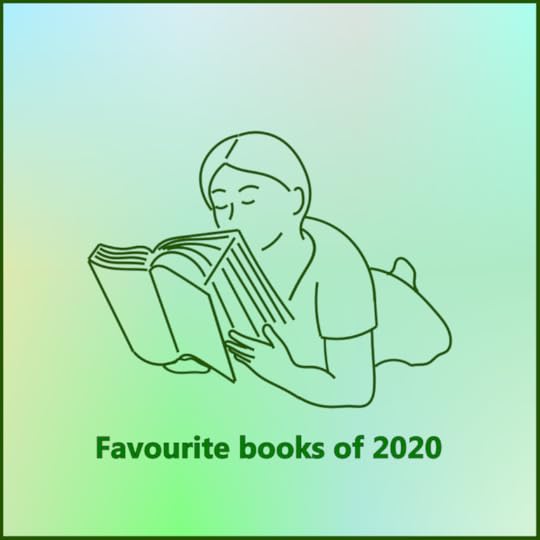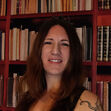Kathryn Nelson's Blog, page 4
March 1, 2021
Giants of the deep
I stand on the edge of the cliff and pull the collar of my coat up around my neck as it starts to drizzle. The wind is blowing hard across the grey sea, whipping the surface into racing white breakers and dragging sheets of rain across the bay in horizontal bands.
“Come on, let’s go back to the car,” urges James.
I tug my hat down and we start walking back towards the village. A kittiwake rises from the cliff face below me, gliding upwards on silent wings before turning out to sea, its grey plumage disappearing into the low clouds. The waves crash against the base of the cliff and occasional pieces of seafoam float up and over the footpath.
I keep glancing out towards the wide horizon, searching the broad expanse of rough water but the grass is slippery underfoot so my gaze is on the ground when James suddenly grips my arm.
“There!” he exclaims. “Did you see it?”
I turn to where he is pointing, squinting against the rain being blown into my face.
A long, sleek form breaks the surface, no more than the shadow of a wave.
For a brief moment, the creature’s tail swings up, free of the sea, a black Y that glides down and disappears.
“Oh, wow!” a grin brightens James’s face. “Did you see it? It must have been a humpback whale. I saw a tiny dorsal fin just before it dove and then that tail. Though I suppose it could have been a minke. They’re a bit more common along here.”
James’s daughter’s a marine biologist, studying the whales in our coastal waters. Clearly, he’s been paying attention when she’s been telling him about her work.
“Oh, look! There’s another one!”
Closer inshore, a whale’s black back emerges and it releases a spout of spray from its blow hole. Another rises next to it and they flash their tails together. There’s no sign of them once they’ve submerged but we know that they are there. These giants of the deep are mostly invisible, like the secrets that lurk deep in my past.
“Humpback whales can grow up to sixteen metres long and weigh up to thirty tonnes,” James tells me, like an excited schoolboy. “Jenny’s been listening to their songs and the range of sounds they make is astounding.”
I can hear the pride in his voice as he talks about his daughter.
“Did you know they can sing for hours? It’s the males mostly, singing to the females and their song can be heard for miles underwater.”
I watched a wildlife documentary about whales when I was a child and for a time, wanted to be a marine biologist, but I didn’t get the grades in science. I work in the local hotel, same as James.
“Jenny says that the underwater noise pollution is getting better now, since the new laws came in a few years ago,” James continues.
Three whales rise in quick succession, nose first, their huge jaws closing with great surges of white water.
“With the complete ban on whale hunting and fewer entanglements in fishing nets, their numbers are increasing now. Ninety per cent of their population was killed by hunting, can you imagine?”
The drizzle is easing and the sun shines brighter through a break in the clouds, lighting up the sea with shards of jade and azure. The biggest whale we’ve seen rises from the depths, a huge, graceful creature.
My heart lifts to see it, to know that there are these incredible animals once again abundant and swimming free in our seas.
I feel honoured to have caught a glimpse of them, awed to witness their splendour, grateful that there are those like James’s daughter looking out for them.
The whale rolls on to its side and waves a long flipper. Like the whale rising from the depths, words rise up my throat.
“I have a daughter.”
The truth broaches the surface, is revealed in the air and light at last. I’ve been wanting to talk about her for a long time but have been too ashamed to speak. I haven’t been allowed to see her since she was a baby.
“Oh, I didn’t know that,” says James. “Will you tell me about her?”
Every story about wildlife contains a story about people.
Links to further information:
https://www.bas.ac.uk/media-post/blue-whales-return-to-south-georgia-after-near-extinction/ British Antarctic Survey report on increased numbers of whales in Antarctica.
https://iwc.int/status The International Whaling Commission information on population status of whales worldwide.
https://uk.whales.org/whales-dolphins/species-guide/humpback-whale/ Information on humpback whales from the Whale and Dolphin Conservation charity.
https://www.seawatchfoundation.org.uk/ The Sea Watch Foundation where you can report sightings of whales and dolphins.

February 22, 2021
Lynx
I sit in the tree, my claws gripping the soft bark of the branch. My tufted ears twitch, monitoring the sounds in the woods. The tip of my short, feline tail twitches.
I hear a car driving along the road in the bottom of the valley.
I have memories of the time before there were cars, before tarmac roads and all the human sprawl. I have memories of when this valley was thick forest filled with aurochs and wolves and many of my kind. Now, I am the only one in this whole country, this whole island, even though it would take me many days to run from one seacoast to the opposite.
Lynx are solitary big cats, they said. They like having plenty of room. Just one for now.
They don’t know that I can understand them. I cannot speak their language but I understand it just fine.
They released me last night. Now, I sit in the tree and watch the sunrise over the valley.
They don’t know that I carry the memories of my ancestors. I know what these humans have done. Now, they are trying to reverse their damage. I was born as part of this experiment. They want to turn back the clock, erase their scars. They think that I will help them.
They think that one lynx in this thick un-wild will absolve them.
I stand up, stretch. The first rays of the sun touch warmth to my thick, soft fur. At least they are trying, at least they are aware now. My ancestors urge me to help them, to bring my ancient memories back to life.
I’d like to make it perfectly clear that this is a work of fiction. There’s no evidence that animals can understand humans to the extend described here. There is evidence for intergenerational inheritance of some traits in some animals but not full memory sets.
I wanted to consider the perspective of newly reintroduced species after hundreds of years of absence.
Lynx have not been found in the UK for 1300 years but reintroduction is being considered as they are a keystone species, helping to create a natural, balanced ecosystem. Through concerted efforts, lynx in Europe have been increasing in number over the past few decades.
Links to further information
https://lynxuk.org/ Lynx UK Trust
https://rewildingeurope.com/rewilding-in-action/wildlife-comeback/lynx/ Info form Rewilding Europe on the European and Iberian lynx
https://www.nature.com/articles/s41467-018-05445-5 A scientific article on the evidence for and against transgenerational inheritance (being able to have memories from your ancestors)

February 15, 2021
Oyster's world
It’s bitterly cold. The northerly wind is blowing across the harbour and cutting through my coat like an icy blade. I pull my scarf up, my hat down. Sunglasses protect my eyes from both the harsh wind and the glare of sunlight off the water. The tide is creeping back in over the mud flats and seabirds are following its advancement. I’m not very good at bird ID and its too cold to take my hands out of my pockets to look through the binoculars that are hanging around my neck. I can see some small brown waders, some larger brown ones with curved beaks. A group of black and white birds take off with piercing cries.
Those ones are called oyster catchers, I remember. Although, I don’t think that they actually catch oysters. Not that oysters would be difficult to catch, if they did. The hand sized disks of the oysters lie on the surface of the mud, immobile.
I remember my grandfather telling me than when he was a boy, oysters were almost extinct. In his grandfather’s day, there had been masses of them. They sold them by the barrel-full, made them into sausages. There was such an abundance of oysters that they formed huge reefs a few miles offshore, covering thousands of square miles.
Within twenty years of being discovered, those reefs had been mined, stripped bare.
I walk on further along the shore and then pause to shelter behind a stand of oak trees. Some of the low spreading branches have dipped below the bank and carry strands of seaweed, waving in the wind like prayer flags.
A V of geese fly low across the harbour. They land a few hundred paces away and with a lot of honking and fussing, settle in to feed on the seagrass. They disturb a flock of starlings and they swirl up from the patch of saltmarsh in which they were sheltering.
I pick up a shell that was resting near my feet. It fits in my palm, circular, one side flatter than the other. The edges are thin, jagged. I can see where there is a ring of new growth like the rings within a tree, pale and fragile at the edge. The shell hinges open like a book full of secrets.
The inside is as smooth as the outside is rough. I run my finger over the pearlescent white interior, the sunlight picking out highlights of blue and pink and shades of ivory, ice and opal.
When oysters form reefs, they create complex habitats for fish and crabs, sponges and anemones. They feed by opening their shells and filtering the seawater, extracting the tiny particles of food they eat. A single oyster can filter seven litres of water a day, my grandfather told me. I imagine trying to drink seven litres of water a day and smile at the empty shell which rests in the palm of my hand.
I gaze out across the harbour and think about all the complex, mysterious patterns which flow through just this tiny corner of the world. I think about my grandfather’s grandfather and the abundance that he saw; the flocks of birds which covered half the sky, the huge shoals of fish, the oyster reefs which stretched for miles. I think about the efforts which have been invested in regaining that historical abundance.
In this harbour alone, there have been decades of research, planning and projects, hundreds of hours given by volunteers and experts. Finally, oyster numbers are beginning to recovery, their abundance increasing. Other once-threatened habitats, the seagrass and saltmarsh, are also recovering. There are now more juvenile fish, native shark species, seals, breeding birds, wildflowers and insects.
The tide has turned and all the complex, interwoven flow of wildlife is rebounding.
I place the oyster shell back on the beach. The oyster has long been a symbol for this harbour, for the people living here and now they hold it high as a symbol of community. I know that my grandfather would be proud. His efforts were not in vain.
I was thinking about last week’s post about rewilding in urban spaces and then I was thinking about Valentine’s day and how oysters are supposed to be a romantic food. However, around the UK, the population of native oysters has declined 95% over the past couple of hundred years, mirroring similar trends worldwide. There are some great projects helping oyster populations and I wanted this post, as part of the Visions of Hope series, to show that bright future we’re aiming for, with robust natural processes in wild places that bring people and the environment together.
Last week’s post about a healthy city river and the post introducing the Visions of Hope series can be found here.
Links to further information
https://noraeurope.eu/ The Native Oyster Restoration Alliance (NORA) supports the protection and ecological restoration of the native European oyster.
https://nativeoysternetwork.org/ The Native Oyster Network is a community of academics, conservationists, oystermen and NGO’s who are working to restore self-sustaining populations of native oysters.
https://www.fitz.cam.ac.uk/news/oysters-natures-water-filters A University of Cambridge article about oysters.
https://www.rspb.org.uk/birds-and-wildlife/wildlife-guides/bird-a-z/oystercatcher/ The RSPB ID guide for oyster catchers.
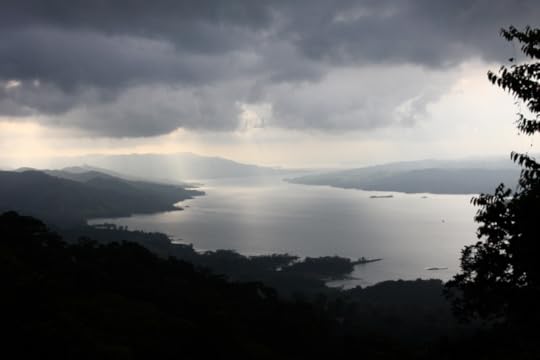
February 7, 2021
City River
I sit on the bench, admiring the craftsmanship which went into its creation. The plaque screwed to the seatback proclaims that the bench was made by a student of the local college as part of their final year carpentry project. The riverside area has many benches set amongst the leafy trees and fragrant flowers. One of the benches is long and curving with the seatback set in the middle for a choice of either a river or city view. Another seat is designed like a regal throne for a single person or perhaps a close couple. The one upon which I sit has armrests carved into the likeness of a flock of birds in flight, each individual bird with wingtips touching its neighbour.
I see the friend I have been waiting for. I stand up and wave. Emma hurries over.
“Hello,” she says. “It’s lovely to see you but I have a meeting at one. We’ll have to hurry, I’m afraid, I don’t have long.”
“No problem,” I say. “I can’t linger either, I have to prepare for a big presentation tomorrow.”
We start walking, paralleling the river downstream towards the park. Here, the river is broad. Below the retaining wall, the banks of the river are a patchwork of reedbeds, saltmarsh and the occasional stack of driftwood. The water runs clear over the stony riverbed and I can see a shoal of silver fish stemming the flow.
“Oh, look!” Emma exclaims and I turn to where she is pointing.
There’s a ripple in the surface of the calm water and suddenly an otter pops up its sleek head. It glances around and then disappears underwater again.
I look up from the wildlife filled river, past the waving stems of the reeds, to the hard line of the concrete wall and the towering skyscrapers above, all metal and glass.
“That was amazing,” I say. “I’ve never seen an otter before.”
“Well, that was worth leaving the office for, wasn’t it?”
We walk on, keeping an eye on the river for further sightings. Underfoot, the paving changes to woodchip – easier to walk on in heels than you might imagine, Emma comments – as we enter the park. Around us are mature elms and soaring oaks with an understory of hazel, elder and holly. We pass an exercise area with static bikes, friction treadmills and other public gym equipment. There’s an elderly couple competing on the cross trainers.
We stop at a food stand and each order a wrap filled with organic, fresh produce grown on a rooftop garden a couple of streets away. We carry our food back to the river and find a bench on which to sit down.
Further downstream, the park becomes an area of wetland which floods in the winter, protecting homes and businesses from flooding, slowing down the rush of water during storms, storing it for dryer spells.
We watch a kingfisher as we eat.
The small bird sits on a branch overhanging the river, occasionally darting down to pluck a fish from the water, its jewel blue plumage flashing bright.
Emma finishes her wrap and tosses her wrapper into the recycling bin. She sits back with a sigh.
“Better?” I ask.
“So much better,” she says. “Sorry for being snippy with you earlier. I was a bit stressed about this meeting and Julia had changed the schedule for next week, but it’s so lovely here. I can’t believe we’re still in the middle of the city. It’s so nice to come here for lunch, to get a breath of fresh air.”
“You’ll be saying you’re a bird watcher next,” I tease.
“Hardly,” Emma refutes. “I’m definitely a city girl. I refuse to go anywhere near all that mud and those funny smells of the countryside. This is nice though, very relaxing.” She stands up and stretches. “However, I really must be heading back now. See you next week?”
“Of course.”
Emma blows me a kiss and strides away. I still have another five minutes. I lean against the railing and watch the kingfisher.
Following on from last week's post about suburban areas, this week, I wanted to write about an inner city scene. I wanted to consider how people and nature can live together, each benefiting the other. The links to further information below are focussed on the Thames, London, England but there are other great examples all around the world, demonstrating the integration of nature into densely populated urban spaces with mutual benefits.
If you haven't read last week's post about greening suburban streets, or the post introducing this series, Visions of Hope, then they are available here.
Links to further information
https://www.estuaryedges.co.uk/ This is a project looking at replacing brick, concrete, and metal tidal walls with a variety of habitats to encouraging biodiversity.
https://www.thamesestuarypartnership.org/ This is a charity bringing people together for the overall benefit of the Thames.
https://www.zsl.org/conservation/regions/uk-europe/thames-conservation The Zoological Society of London conducts research and educational programs all over the world, including a range of projects on the Thames.

January 31, 2021
Our suburban future
I walk out of the library, putting this week’s reading – the latest fantasy novel by my favourite author and an old book on gardening – into my bag. I head home, passing the general store which sells everything from seeds to jam, screwdrivers to baked beans. The smell of freshly baked bread fills my nose and makes my mouth water. Ignoring my rumbling stomach, I walk on, past the doctor’s and the pharmacy, the café and the hairdressers. I pause outside of the community centre to look at the notice board. There’s a schedule which includes yoga on a Monday, ‘knitting and nattering’ on a Tuesday and youth club on a Friday. There’s also a poster for a lost cat and an advert for the local football team inviting new players to join.
The summer sunshine makes an appearance from behind a bank of cloud and by the time I’m halfway up the hill, I have to unzip my jacket. Ten minutes later and I’m approaching my road. I live in a detached bungalow near the end of a cul-de-sac, a typical design for this area. A few years before I moved in, the whole cul-de-sac was pedestrianised.
On each side of the road, the houses are set back from the pavement with small front gardens, most of them a mix of lawn and flowers and bushes. The old pavement remains outside the front gardens but the grass verge has been planted with dwarf variety fruit trees, fruit bushes and wild flowers. The tarmac road has been replaced with a hardy mix of clover and chamomile. An underlay of hidden mesh means that vehicles can still drive on it when necessary for deliveries or services.
Emma and James from number six are playing with a frisbee in the middle of the road.
The spaniel from number two has escaped again and is trying to join in the game. A black bird sings loudly from the nearest apple tree. Bees buzz around the lavender frothing over the front wall of number fifteen. An admiral butterfly flitters indecisively between the red current and gooseberry bushes.
Not all of the suburban streets are pedestrianised like mine but more and more are opting to do so. Private car ownership has fallen dramatically over the past few years. Most of us work from home and most of the services I need are within a fifteen minute walk from my house. If I want to go to the city centre, the electric buses run every ten minutes from the bottom of the road or I can make use of the excellent cycle lanes or I can call one of the subsidised taxis or use one of the car pool vehicles.
I turn into my road and Terry from number one gives me a cheery wave.
“Hello, Terry,” I greet him.
“Hi, are you all set for the annual picnic on Saturday?” he asks.
“Looking forward to it,” I say.
We have a Green Close get together the first Saturday in August. It’s a chance to catch up with the neighbours.
We all bring something.
Some of us bake or make salads and sandwiches. Ben always wheels out his big gas BBQ. June usually plays her guitar and Vera’s grandson has been learning the saxophone and has promised at least one song.
“I’m not much of a baker, I’m afraid,” I confess. “I’m going to deadhead the roses, though and prune the pear trees.”
“You’re so good at looking after the community garden here, you and Liam and Jenny,” Terry says. “If you pick any blackcurrants, I’ll get Sophie to make some jam.”
“I’ll bring a tub of them over tomorrow, I noticed some ripening earlier.”
“Sounds great. See you later.”
“Bye.”
As I walk under the plum tree outside my house, I test one of the fruits to see if it is ripe and it falls easily off its stem. It’s sun warmed and smells delicious. I take a bite and the sweet juice fills my mouth as I walk up the path to my home.
Following on from last week’s post about gardens and how we can make meaningful local changes, this week, I wanted to step outside the front door to think about how our houses fit into our streets and communities. I was interested in exploring how our urban spaces can be improved for nature and for people, integrating concepts around food production, transport and socialising.
You can read last week's post on gardening and the previous post introducing this series, Visions of Hope, here.
Feel free to discuss in the comments your thoughts on the future of our urban spaces.
Links to further information:
https://www.udg.org.uk/ The Urban Design Group has lots of information about designing urban spaces.
https://www.ted.com/talks/carlos_moreno_the_15_minute_city/transcript A TED talk on the concept of the 15 minute city, where everything you need is within a fifteen minute walk.
https://suburban-taskforce.org/ The UK Government has set up a taskforce to look at suburban development.
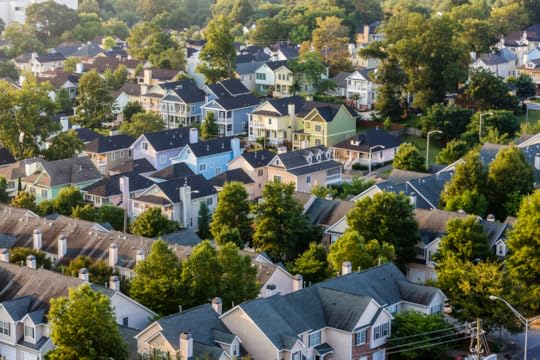
January 25, 2021
Cuckoo
I wake up to the sound of bird song.
I lie with my eyes closed, trying to identify individual singers as they all compete outside my window. There’s a blackbird’s high trill and a blue tit’s peep, a turtle dove’s soft purr and a nightingale’s melody. A cuckoo sounds briefly, such a distinctive call.
I resist the urge to leap out of bed to peer out of the window. Cuckoo’s are difficult to spot but they’re a common enough sight now, that I don’t need to jump up at the off chance of seeing one. When I was a child, I never saw one, rarely even heard that distinctive announcement of spring. When I phoned my son a few days ago to tell him that I’d seen three cuckoos on a woodland walk, he hadn’t been surprised. They were heading towards extinction, I told him. That was years ago, he claimed, like he does when I talk about old TV shows or the price of chocolate bars. It’s all this rewilding, tree planting and woodland management, he claimed. Cuckoo numbers now, are ten times what they were a decade ago.
I smile as I sit up in bed. I can hear a robin and a sparrow, then the harsh cry of a green woodpecker. I swing my legs out of bed and walk over to the window, not quite as spry as I used to be. When I open the curtains, soft dawn light spills over me. The sky is a clear peach with rosy clouds and a few orange streaks.
Birds flit around my average rectangle of garden. There’s a goldfinch on the bird feeder and a handful of starlings at the edge of the pond. The hedgehog, who had been hibernating in the woodpile, is snuffling around the bottom of the bird feeder. A family of house sparrows are hopping along the thick privet hedge.
The grass is growing long again, buttercups, vetch, cornflowers and clover spreading through the long stems. The apple tree blossoms are swelling and the fruit bushes are thick with bright new leaves.
I lean against the window sill and remember when the garden used to be just an area of patchy grass. Weedkiller, pesticides and slug pellets had created an almost lifeless desert, for all it was green. Now, there was a diversity of flowers and plants, colour and forms. There were plenty of places for nature to thrive.
It was only a few square metres but that was all that I had influence over.
This was the little patch of space where I could make a difference.
When I started to think about all the gardens on my road and all the gardens in the town, I thought that making just a little bit of difference might start to add up.
Suddenly, the song birds fall silent and scatter into cover. A sparrowhawk swoops down, narrowly missing a slow sparrow. My jaw hangs open. The sparrowhawk dips its head to take a drink from the pond. Then it launches back up into the air and is gone. In my father’s time, sparrowhawks were almost extinct. Reintroduction and breeding programs have brought them back from the brink.
I turn away from the window and head downstairs to put the kettle on. I’ll have to remember to phone my son later and tell him about the sparrowhawk. He helped me dig that pond. At the time, we’d no idea the beautiful change we’d be making to our lives and the lives of so many others.
I wanted to start the Visions of Hope series with something close to home. Many of us have a garden or access to a bit of green space. A few small changes in these spaces can start to add up, to make a difference. It's something that many of us can do directly, can do today, or this week. We don't need to wait for politicians or global policies and we'll directly reap the benefits.
If you missed the introduction to the Visions of Hope series, you can read it here.
Please share in the comments any gardening tips, suggestions, successes or wildlife sightings.
Links to further information:
https://www.rspb.org.uk/ RSPB for bird identification and suggestions for giving nature a home.
https://www.wildlifetrusts.org/ The Wildlife Trusts for nature based activities and tips for wildlife gardening.
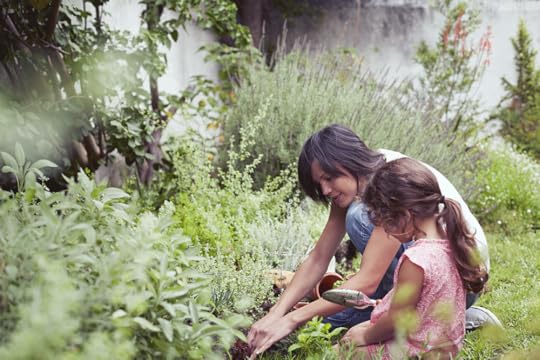
January 17, 2021
Visions of hope
I've been thinking a lot over the past few weeks about what I would like more of this year, and perhaps, too, what I could do with less of. I was feeling I could do with some more good news stories, less of the divisive, fear-mongering hyperbole. We're all going through some really challenging, dark times at the moment and in response to that, I want to seek out some bright splashes of hope, some shining examples of goodness, bravery, beauty. I want to share with you some small moments of light, in contrast to the darkness.
I think what we need at this time are visions of hope that we can cling to, that we can shield behind, that can guide us. We need visions of hope to remind us what we're fighting for, to highlight some examples of what can be achieved, to inspire us to action.
Positivity can lift us, energise us, bring us together.
Together, we are strong, capable, ingenious. Together we can change the narrative of the future. These bright lights can guide us, these visions of hope.
This post is an introduction to a new blog series called 'Visions of Hope' where, each week, I'll be exploring a different topic, using fictional stories to sketch out visions of a potential, brighter future with themes such as rewilding, climate change, technology, infrastructure and community. Please do join in the discussion in the comments as the weeks unfold. I'm interested in solutions, and at this stage, the more the better, even the ones which people say might never work. Also let me know if there's a topic that you'd like me to cover and feel free to send me links to relevant projects. Each week, I'll add some links to further reading if you're interested in finding out more.
Links to further information
https://futurecrunch.com/ Future Crunch - Science, technology, intelligent optimism (not necessarily in that order).
https://longnow.org/ The Long Now Foundation was established to foster long-term thinking and responsibility in the framework of the next 10,000 years.
https://sentiers.media/ Sentiers is about imagining, critiquing, and building futures.

January 10, 2021
Publication!
I can hardly believe it! I'm so excited to say that publication day is nearly here. On Friday, Strengthening Spirit, Ethra Born 2, is going to be published. It will be available in Kindle ebook and paperback from Amazon.
Looking for a story that has magic, adventure and genuine heroines?
Strengthening Spirit forces Lowenna to leave her home and her family to help Karnoss, the forest spirit, who is in desperate need of a healer. I wrote the first draft a few years ago, before there was any talk of coronavirus. I know this is a sensitive time to publish a story with one of the central themes being sickness, but it's a completely different scenario in Strengthening Spirit. And, in case you're wondering, there is a happy ending.
I believe that Strengthening Spirit is ultimately an up-lifting story. The characters overcome the challenges that block their journey, demonstrating ingenuity, fortitude and compassion, resulting in personal growth and in the end, a better world. As Hope would say, we see that there is always hope.
Enjoy reading authors such as Robin Hobb, David Eddings and Tamora Pierce?
Strengthening Spirit tests friendships, loyalty and family ties. Lowenna questions who she is and what she is willing to do for those she loves and what she is willing to sacrifice. The natural splendour of the forest is revealed and we see its complex diversity, as well as its fragility. There's a deep message of taking responsibility for our actions and owning the consequences.
Want to know more?
Check out the book trailer created in collaboration with the maker, Infinity Mind.
The first chapter of Strengthening Spirit is available here.
Previous blog posts, which include flash fiction pieces about Karnoss and his forest, and a five part interview with Lowenna, are available here.
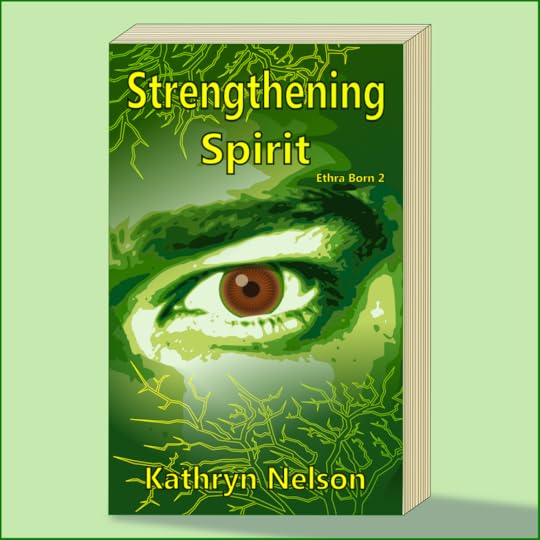
January 3, 2021
Favourite authors
Last week’s blog post was about my three favourite books/series/authors of 2020. Whilst I was writing it, I started thinking about all the other great books/series/authors I’ve read over the years. So, here are just a few of my favourites. There's not room to list them all, this isn't an exhaustive list by any means, but here are three authors who have inspired me.
Robin Hobb
I’ve read all of Robin Hobb’s books. I love these stories. There are great characters, sweeping adventures and incredible world building. Liveship Traders was the first series I read and was, in part, inspiration for book four of my Ethra Born series. Although, I don't have talking ships, sea serpents or pirates, I do have a shapeshifters and deep sea monsters. Robin Hobb’s level of storytelling is something to which I aspire.
Laurell K Hamilton
The Anita Blake, Vampire Hunter series is a great urban fantasy. In places, it’s a bit graphic for my taste but it’s got the classic vampires and werewolves with a whole dash of new, imaginative magic. There are epic power struggles and some really human, touching moments, with plenty of drama. The books are fast paced and the heroine has incredible stamina, surviving for several days on nothing more than a couple of cups of coffee, whilst juggling work, a complicated love life and a whole host of villains.
Ilona Andrews
In the Kate Daniels’ world, magic and technology are battling for dominance. The backdrop creates a dangerous and unpredictable place, populated with complex characters fighting for power and survival. I read Iron and Magic (the first (and only, at the moment) book of The Iron Covenant series) first, before going through the Kate Daniels’ series. The fights are epic, the odds racking up to impossible challenges that the heroes manage to overcome each time. Kate Daniels is a genuine heroine, speaking up, speaking out, always doing the right thing, protecting and caring, endangering herself to save others.
There’s plenty more books which I’ve found inspirational over the years, but I’ll leave it at those three books/series/authors for now.
All that’s left to say is Happy New Year. Hope you’re safe and well and that you have plenty of good books to read.
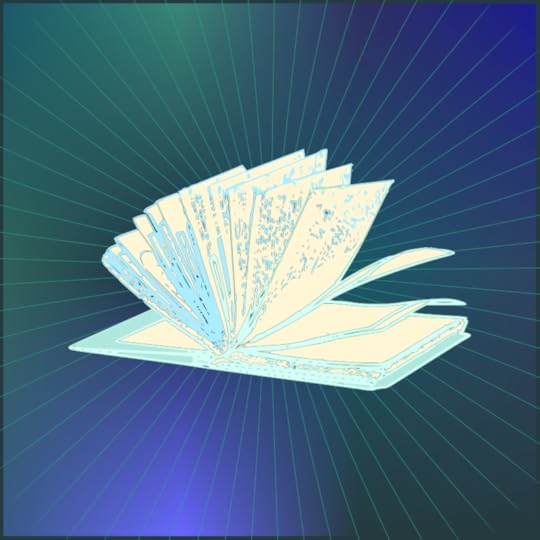
December 27, 2020
Favourite books of 2020
Like most authors, I love reading. This year, I’ve enjoyed many an evening curled up on the sofa with the dogs, reading for escapism, comfort, inspiration, all sorts of reasons. I tend not to read a lot when I’m writing, particularly when I’m working on a first draft, otherwise whatever it is I’m reading seeps into my work. Of course, what I’ve read over the years has some influence on my own writing but when I was writing my pacifist healer character and she started acting more like the vampire hunter character in the novel I was reading, I had to put the vampire hunter aside for a bit.
So, I wanted to share my favourite three books of 2020. These weren’t necessarily published this year but these are what I’ve read in the last twelve months. Unfortunately, when I started thinking about it, I couldn’t choose just three books, so here are my three favourite books/series/authors.
Fever series by Karen Marie Moning
I re-read the whole series this year, all 11 books back-to-back. I don’t usually like re-reading books but this was totally worth it and reading the whole series through in one go made it all come together in a way that it hadn’t the first time I’d read the books with several months or longer between each one.
I’ll warn you now, the story is brutal. Terrible, awful things happen to the characters. It’s heart-wrenching stuff. But the darkness is beautifully balanced by the bright splashes of light, the humour, the friendships, the love, the honour. The characters are flawed, complex. They make mistakes. There are surprises, challenges, twists and turns. Oh, and a happy ending.
Lizzie Grace series by Keri Arthur
Keri Arthur is one of my favourite authors. Her Australia-based urban fantasy series are gripping, gritty. She writes genuine heroines; tough, no-nonsense women who can look after themselves, but who nevertheless remain compassionate, loving, honourable. They stand up against the bad guys, fight injustices and protect the vulnerable.
I’ve read several Keri Arthur series, including the Riley Jenson Guardian series, the Dark Angel series and the Damask Circle. This year, I discovered a series I hadn’t read before, the Lizzie Grace series. I love it when I discover more books from an author I admire. I’ve only read the first two books so far, with another six still to enjoy.
The Endarian Prophecy by Richard Phillips
I hadn’t read any Richard Phillips before I started reading Mark of Fire, the first book in the Endarian Prophecy series. It’s an epic fantasy, with multiple opposing factions, world-spanning journeys and elemental magic. There’s a whole host of interesting characters, all with their own in-depth back stories.
My favourite bit was where the main character is trying to learn a new type of magic but she keeps being swept away under the influence of competing forces. She finally masters the magic by establishing a protective barrier between herself and the external influences. This was a great visualisation for establishing healthy barriers in our everyday, real lives.
So there we have it, my favourite books of 2020. Stories to comfort and inspire, to sweep you away on an adventure and to make you pause and think.
It’s been a rollercoaster of a year. Here’s to 2021.
